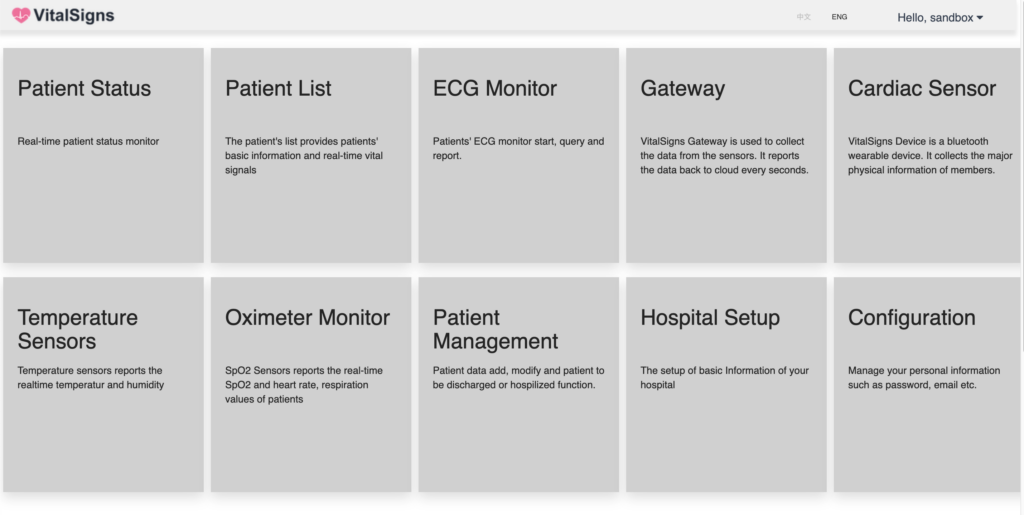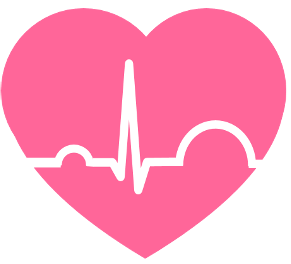VS-SAFETY is a cloud platform designed to assist healthcare professionals with long-term or remote patient care. “Main” is its primary functional page, and for the Sandbox test account, it displays main feature blocks as shown in the figure below. These features include:
Patient Status: This is the first screen we see after logging in, called “Patient Monitor.” It provides real-time patient information. We recommend using a visible dashboard to continuously monitor your patients’ status day and night, providing them with immediate assistance.
Patient List: This feature displays all the patients visible to the Sandbox account. In this example, we can only see one patient, John.
ECG Monitor: The ECG Monitor opens a long-term monitoring of the patient’s ECG. After monitoring is completed, it generates a report for relevant healthcare professionals to use for care or diagnosis reference.
Gateway: The Gateway page shows the list of VSG101 and VSG102 gateways visible to the Sandbox account. VSG101 is an LTE version of the gateway that patients can carry with them, while VSG102 is a WiFi version suitable for medical institutions or personal residences. Both gateways can be integrated with VSH101 in VS-SAFETY. You can view this page to check if VSG-101 and VSG-102 are functioning normally.
- Cardiac Sensor: VS-SAFETY utilizes VitalSigns Technology’s VSH101 as the sensor for ECG and physiological information. It can continuously report raw ECG data, as well as temperature and activity-related indicators for over 48 hours. This feature displays the sensors visible to your current account, allowing you to verify the proper functioning of the VSH101 physiological sensor.
- Temperature Sensors: VS-SAFETY utilizes the highly accurate VST103 for monitoring environmental temperature and humidity. Within medical facilities, medication storage and specimens need to be maintained at specific temperatures. The VST103 has an extremely wide measurement range and can continuously monitor for 10 years on a single battery. It serves as a crucial device for customers in monitoring medication storage, specimen conditions, and environmental settings. The Temperature Sensor feature displays the list of VST103 devices visible to your current account.
- Oximeter Monitor: Blood oxygen level is a critical physiological indicator of a patient’s health. A rapid decline in blood oxygen saturation indicates that the patient may require immediate medical attention. VS-SAFETY integrates with Omron to provide real-time monitoring and recording of the patient’s blood oxygen levels. The Oximeter Monitor feature displays the blood oxygen devices owned by the current account.
- Patient Management: Patient management is a crucial aspect of VS-SAFETY. Patients need to be created in the system before they can undergo long-term monitoring or generate monitoring reports. This feature allows authorized users to add new patients or query patient information.
- Hospital Setup: If you have appropriate permissions, you can set up the name of your medical facility, which will appear on top of your reports. VS-SAFETY will record patients under your designated medical facility. Clicking on this feature allows you to add and modify relevant information for your medical facility.
- Configuration: This feature is for personal system settings within VS-SAFETY, including password changes. Since this account is a “sandbox,” we have removed most of the functions.


